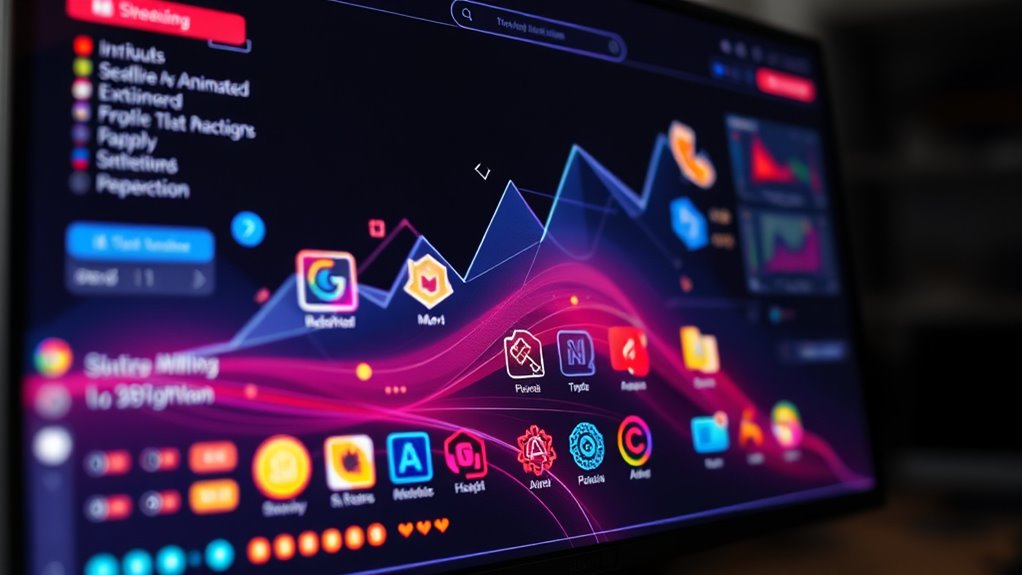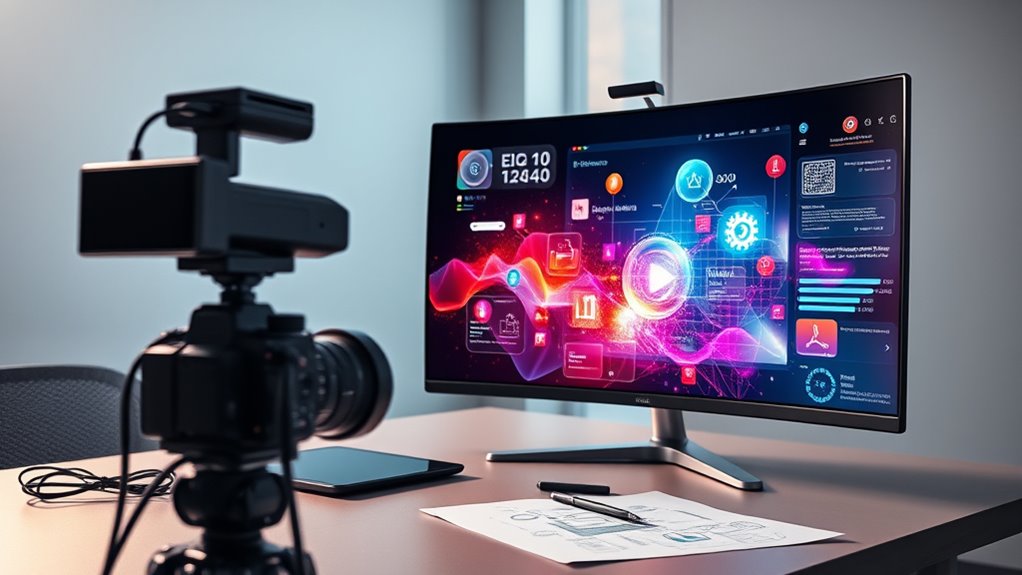EU digital design protection lets you secure animations and GUIs across all EU countries with a single registration. This legal safeguard grants you exclusive rights, deters copying, and creates a formal record of your creative work. It also strengthens your legal position if infringement occurs and saves you time and resources by avoiding multiple national filings. To understand how this protection can enhance your digital assets, keep exploring the benefits it offers.
Key Takeaways
- EU design registration provides legal protection for the visual appearance of animations and GUIs.
- A single registration covers the entire EU, simplifying multi-country protection.
- It establishes exclusive rights, preventing unauthorized copying or use of digital visuals.
- Registered designs serve as official evidence in infringement disputes, strengthening enforcement.
- Protecting digital assets enhances brand value and deters potential infringers across European markets.

In today’s digital world, protecting the visual aspects of animations and graphical user interfaces (GUIs) is more important than ever. These elements are often core digital assets that define the unique identity of your software, app, or website. When you create a distinctive animation or GUI, you want to guarantee that your work is legally protected against copying or unauthorized use. That’s where EU digital design protection comes into play. It offers a framework to safeguard your visual creations, giving you control over how they’re used and allowing you to enforce your rights if infringement occurs.
One of the key steps in securing your digital assets is design registration. By registering your design in the EU, you establish a formal record of your creation’s originality and visual features. This process grants you exclusive rights over the appearance of your animation or GUI, making it easier to prevent others from copying or imitating your work. Registration provides legal clarity and strengthens your position in case you need to take action against infringers. It’s a straightforward process that typically involves submitting visual representations of your design to the European Union Intellectual Property Office (EUIPO). Once registered, your design enjoys a certain period of protection, usually up to 25 years, provided you renew it regularly.
Registering your design in the EU grants exclusive rights and legal clarity for protecting your animations and GUIs.
Registering your design isn’t just about legal protection; it also adds value to your digital asset. A registered design signals to clients, partners, and competitors that you have taken steps to protect your creative work. It can serve as a deterrent to potential infringers, knowing that your design is officially recorded and protected under EU law. Additionally, the registration process creates an official record that can be used as evidence in disputes, making enforcement more straightforward. This is especially important for animations and GUIs, where visual originality is often the key to differentiating your product in a competitive market. Furthermore, understanding design registration can help you navigate the complexities of intellectual property rights and ensure your creative investments are safeguarded effectively.
Moreover, the EU’s approach to digital design protection simplifies the process across multiple countries within the union. Instead of filing separate applications in each member state, a single registration covers the entire EU, saving you time and resources. This harmonized system ensures your digital assets are consistently protected across borders, giving you peace of mind as your animations and GUIs circulate in various markets. Overall, understanding the importance of design registration and leveraging EU protections helps you defend your creative work effectively, turning your visual innovations into valuable, protected digital assets.
Frequently Asked Questions
How Long Does Digital Design Protection Last in the EU?
Digital design protection in the EU lasts for a maximum of 25 years. You should be aware of the duration limits, which start from the date of registration or, if unregistered, from the date of first publication. Renewal policies are generally not required, as the protection is automatic upon registration. Keep track of renewal deadlines if applicable, to guarantee your rights remain safeguarded throughout the entire period.
Are There Specific Criteria for Registering Animated Designs?
Think of registering an animated design like planting a seed in a garden—you need the right conditions. For animated registration, your design must be new, individual, and visible to the eye. The design criteria include uniqueness and originality in motion or appearance. Guarantee your animation isn’t just a simple variation but a distinctive visual element, meeting these specific criteria to secure protection under EU law.
Can Digital Design Protection Be Renewed or Extended?
Yes, digital design protection can be renewed, but only if it’s eligible for renewal before the protection duration expires. You need to file for design renewal within the renewal period, which typically extends the protection duration by another five years. Keep in mind, the total protection duration usually doesn’t exceed 25 years. Staying proactive guarantees your digital designs remain protected without interruption.
How Does EU Law Differ From Other Jurisdictions Regarding GUIS?
You might think EU law is similar to other regions, but it offers unique protections for GUIs that emphasize visual aesthetics and user interface design. Unlike some jurisdictions, the EU grants unregistered rights, providing faster, broader protection without formal registration. This encourages innovation. So, if you’re designing GUIs, understanding these differences helps safeguard your work effectively, ensuring your user interface stands out and stays protected across the EU.
What Are the Penalties for Infringing Protected Digital Designs?
If you commit design infringement, you face significant penalties, including fines and injunctions. Penalty enforcement varies depending on the severity of the infringement and whether it’s deliberate. You could be ordered to cease the infringing activity and pay damages to the rights holder. It’s essential to understand that EU law prioritizes protecting digital designs, so avoiding infringement helps you steer clear of costly legal consequences and reputational damage.
Conclusion
So, now that you know EU digital design protections, you might think your animations and GUIs are invincible. But don’t get too comfortable—protection’s only as good as the enforcement, and loopholes are just waiting to be exploited. Perhaps it’s time to ask: are these laws really safeguarding creativity, or just giving designers a false sense of security? Either way, one thing’s certain—your masterpiece might be protected, but it’s still vulnerable to the ever-present threat of copyright pirates.









